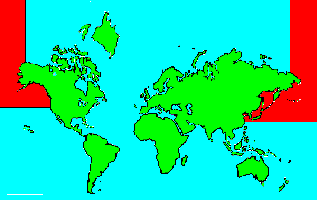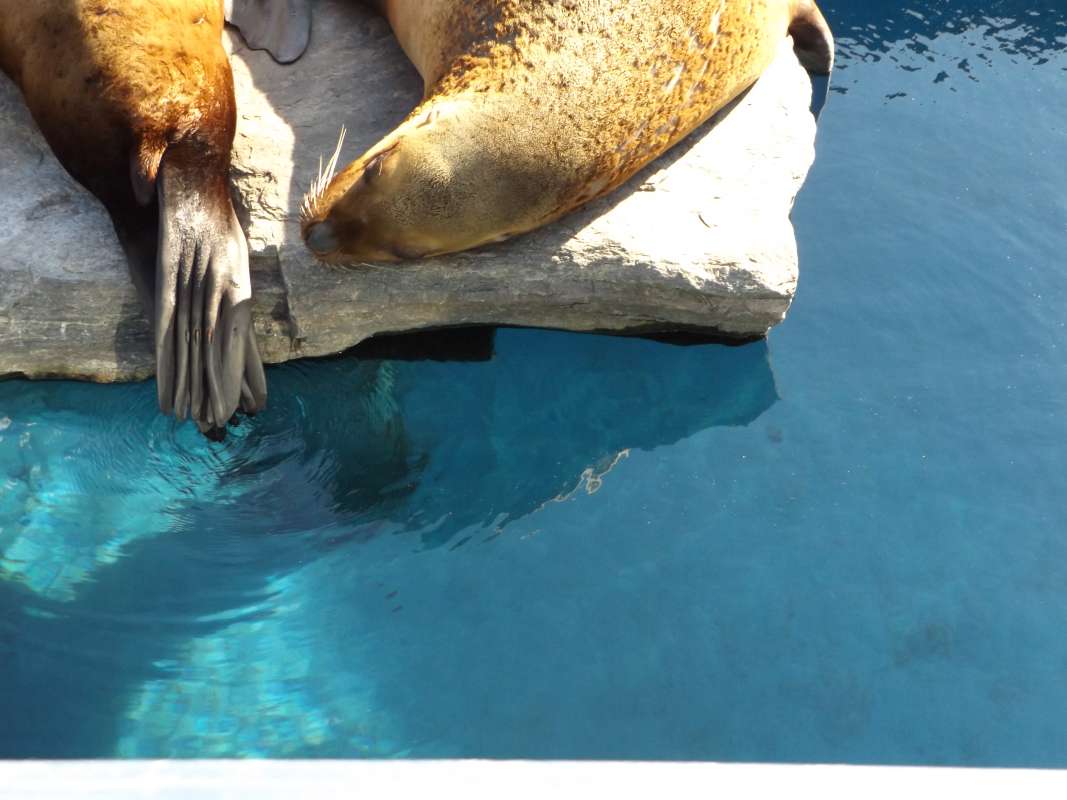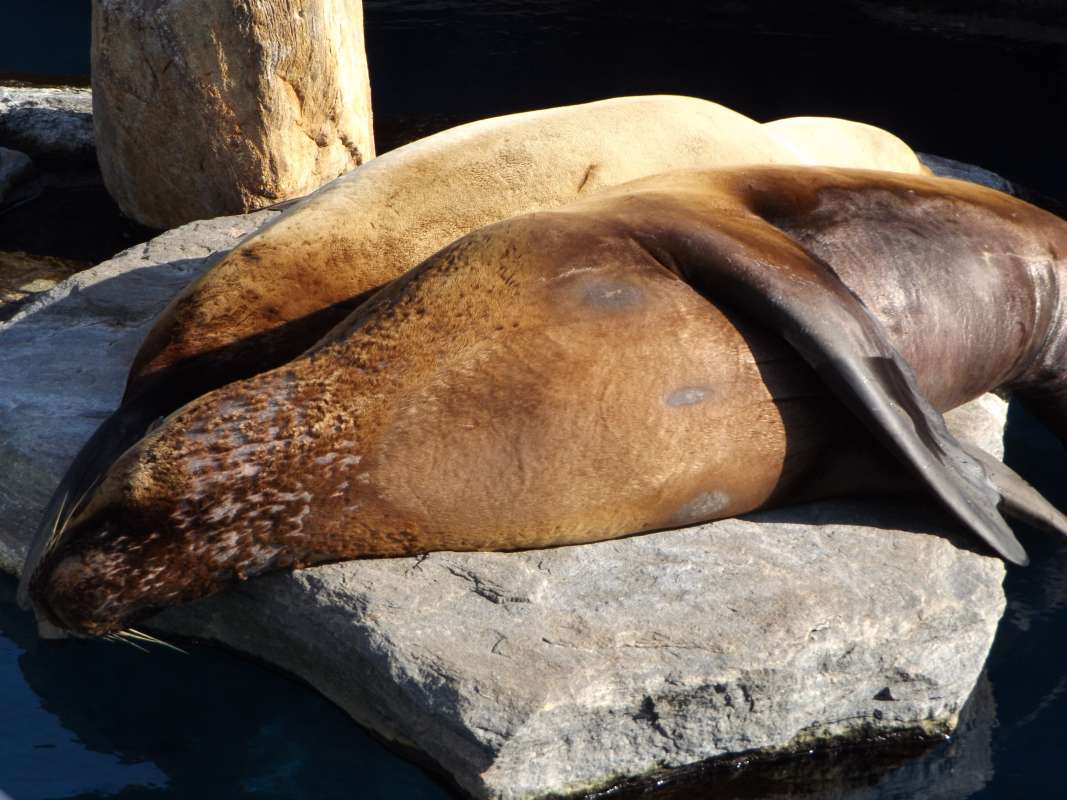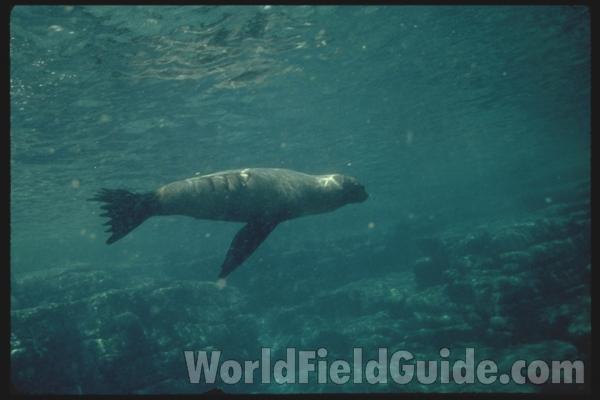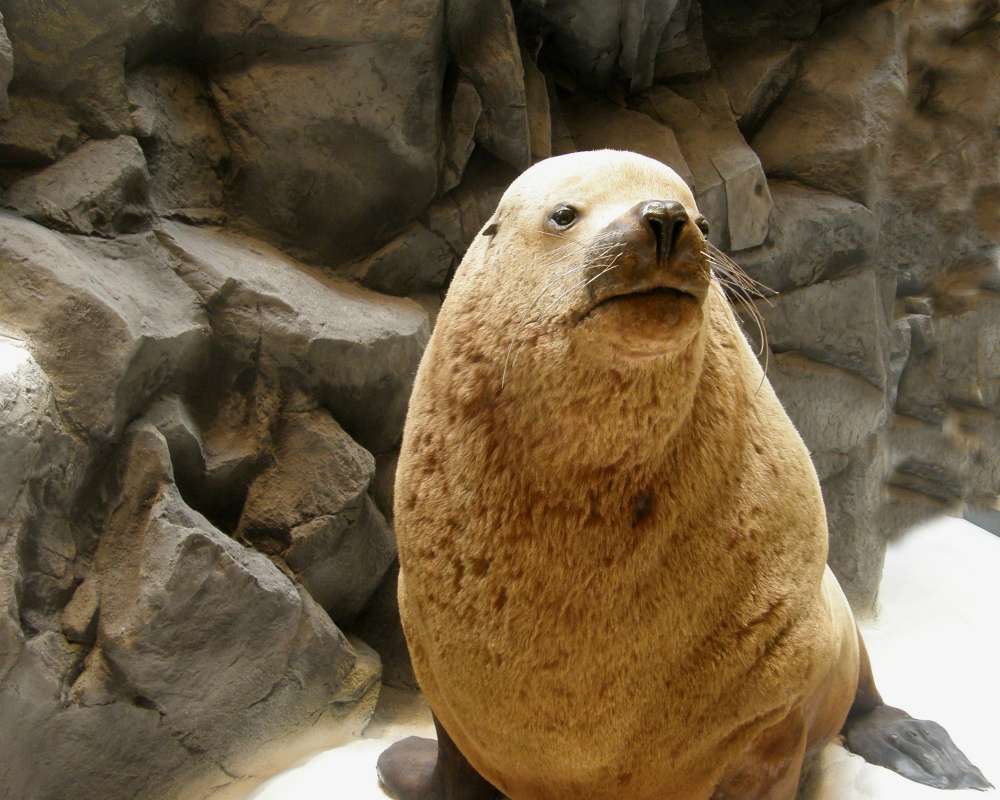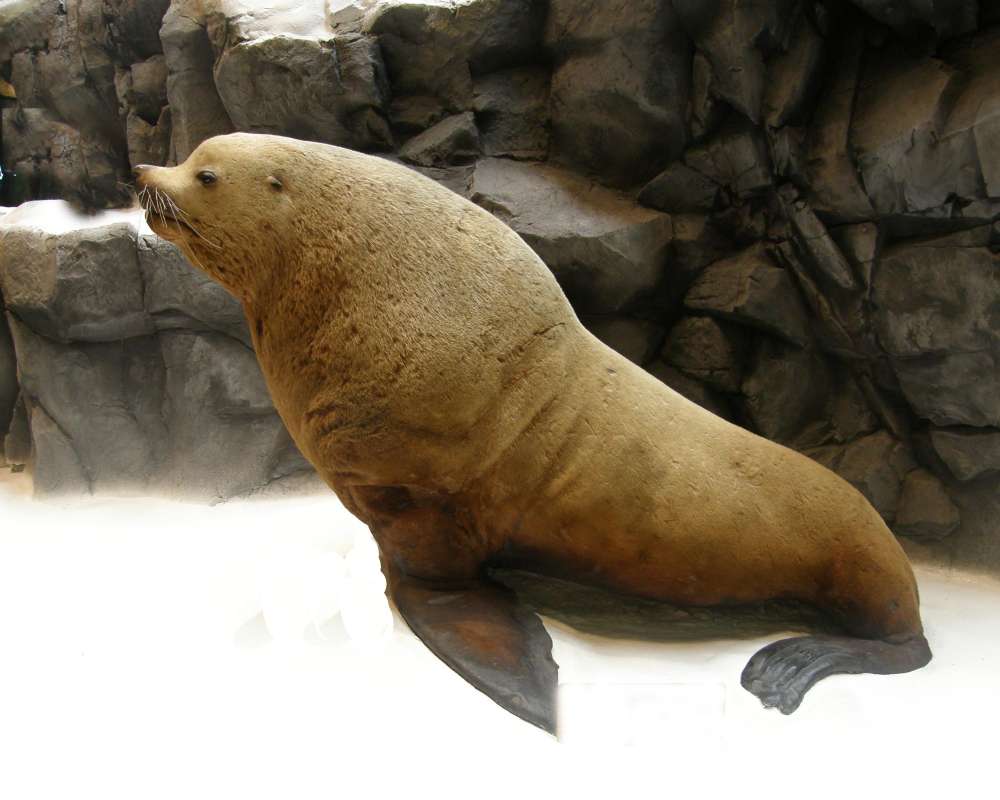SPECIES INFO
Northern or Steller's Sea Lion (Eumetopias jubata to Eumetopias jubatus) is found in the northern Pacific Ocean. Although this Sea Lion is found as far south as California, it is found primarily in the Aleutian Islands and westward to Japan and then northward.
The male can reach to 11 feet in length and weigh up to 2,400 pounds. The smaller female does not reach 10 feet in length, and she weighs less than 800 pounds. The male has an unusual angle at the base of its muzzle.
Population estimates in l980 were about 250,000 animals. Total population estimates about 1995 were between 60,000 and 70,000 individuals. They are now protected by a number of laws from different countries. Recent population estimates for the western population were about 39,000 and 44,000 for the eastern population around 2004-2005. The causes for this decline are not known, but suggestions include: killer whales and sharks, accidental fishing incidents, and pollution.Eared Seals (Family Otariidae) contains the California Sea Lion and the Fur Seal. Sometimes the Walrus is placed here, but now placed in a separate family called Odobenidae or even placed in the Phocidae. These animals have a small external ear. The fourteen species in this group are organized into eight different genera. Following is a list of some of the species in this family:
SPECIES - - - - - - COMMON NAME - - - LOCATION
Varctocephalus doriferus - (Australia Sea Lion) - Tasmania and Australia
Arctocephalus philippi - (Guadeloupe Fur Seal) - Pacific
Arctocephalus pusillus - (Cape Fur Seal) - Southwest Africa
A. townsendi - (See A. philippi above)
Callorhinus ursinus - (Northern Fur Seal) - North Pacific, Bering Sea
Eumetopias jubata - (Stellar Sea Lion) - North Pacific
Neophoea cinera - (Australia Sea Lion) - Australia
Odobaenus rosmarus - (Walrus) - Far north hemisphere
Otaria flavescens - (Patagonia Sea Lion) - South America
Phocarctos hookeri - (Hooker's Sea Lion) - Australia
Zalophus californianus - (California Sea Lion) - Japan, Mexico, California
Walruses and Seals (Order Pinnipedia) are a group of marine animals that are especially abundant in cold areas particularly near the poles. These animals are characterized by front and rear legs that have modified into flippers for swimming. They spend most of their lives in water, and are not especially adapted for living on land. Most species feed on fish, marine Crustacea, and other vertebrates. Because these animals are closely related to the carnivores, they could be combined with the carnivore group into one large order.
This order appears not to be valid under a Hennigean-Cladistic taxonomy. The eared seals (Family Otaridae) evolved from dog like carnivores about 25 million years ago, and the true seals (Phocidae) appeared to have evolved about 15 million years ago from otter like carnivores.
Although most modern scientists would move these animals into the Carnivore Order, we have retained them as a separate order. The science of cladistics would have us place one family under the Canis genus, and another family under the otters or under the Mustelidae. (We believe that if we restated the taxonomic tree in line with the latest evolutionary thinking, we would end up with an enormous number of levels. We believe the taxonomic drill down is a valuable tool for environmentalists, nature lovers, and even for scientific specialists.)
Mammals (Class Mammalia), together with the birds, are among the youngest of the classes of animals. In species count, mammals number about fifty-one hundred, trailing reptiles (approximately fifty-five hundred), fish (approximately eighteen thousand), and birds (approximately eighty-six hundred).
There are three sub-types of mammals:
monotremes, the most primitive:
Develop in reptilian-like eggs and suckle milk emerging
(i.e., spiny anteater, duckbilled platypus)
marsupials
Newborn emerges very underdeveloped and continue to
mature in a pouch on its mother's abdomen (i.e., opossums,
koala, kangaroo)
placental
Embryo develops within the uterus of the female and is
dependent on a placenta for nutrition and waste removal
(i.e., humans, lions, monkeys)
About sixty-five million years ago, the Tertiary era produced thirty-five orders of mammals. Of this number, eighteen have survived to represent Earth's most diversified as well as its most highly developed classification of animals.
Extinction of mammals is fast becoming a serious issue. Duff and Lawson present a list of forty-one extinct species that reached extinction prior to 1800. These forty-one species are not acknowledged in the counts of the various families. Duff and Lawson also present a list of forty-six species including three gazelles, one zebra, one seal, one deer, and one wolf that have probably gone extinct since 1800. These forty-six species are included in the family counts. Science is adding about forty to fifty new species a year to the list. Many of these are the result of divisions of prior species; some are recent discoveries.
Mammals owe their survival to adaptive capabilities that include the ability to exploit whatever sources of food are available to them, as well as their ability to adjust to various climes. Food specialization influenced evolution to such a great extent that the teeth structure can and has been used to provide extensive information on the food needs and various lifestyles of extinct species.
Despite the vast diversity among mammals in terms of size, habitats and adaptations, they share without exception many characteristics such as:
a. body hair
b. mammary glands
c. certain skull characteristics
d. four limbs that permit speed
e. parallel not perpendicular limbs
f. compartmentalized internal organs
g. a four-chambered heart and pulmonary circulation
Backboned Animals (Phylum Chordata) are the most advanced group of animals on earth. These animals are characterized by having a spinal cord or backbone. Most members have a clearly defined brain that controls the organism through a spinal cord. Fish, amphibians, reptiles, birds, and mammals are in this phylum.
Currently, some taxonomists believe that the fish should be divided into two groups (sharks and regular fishes) and that there are some other primitive groups in the phylum such as hagfish or lampreys.
Animal Kingdom contains numerous organisms that feed on other animals or plants. Included in the animal kingdom are the lower marine invertebrates such as sponges and corals, the jointed legged animals such as insects and spiders, and the backboned animals such as fish, amphibians, reptiles, birds, and mammals.
